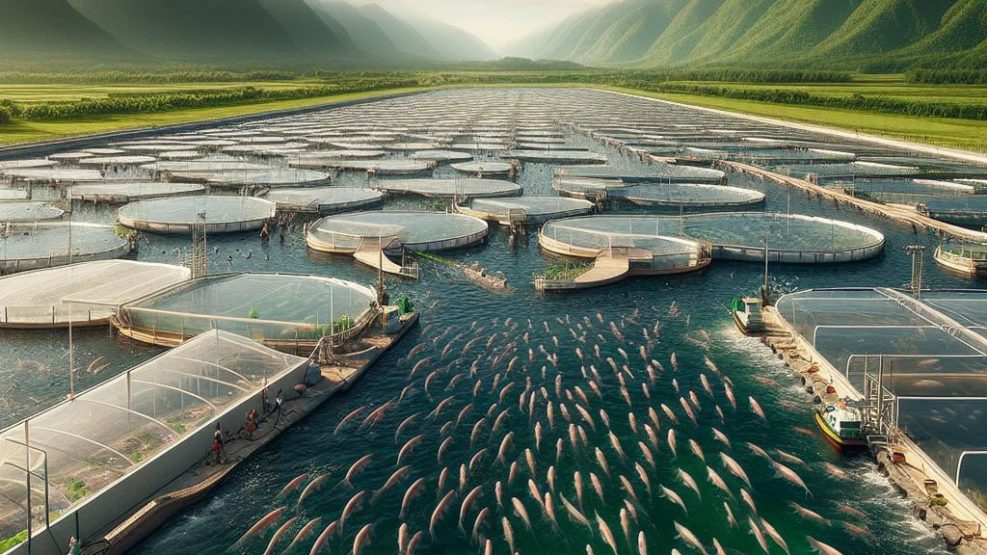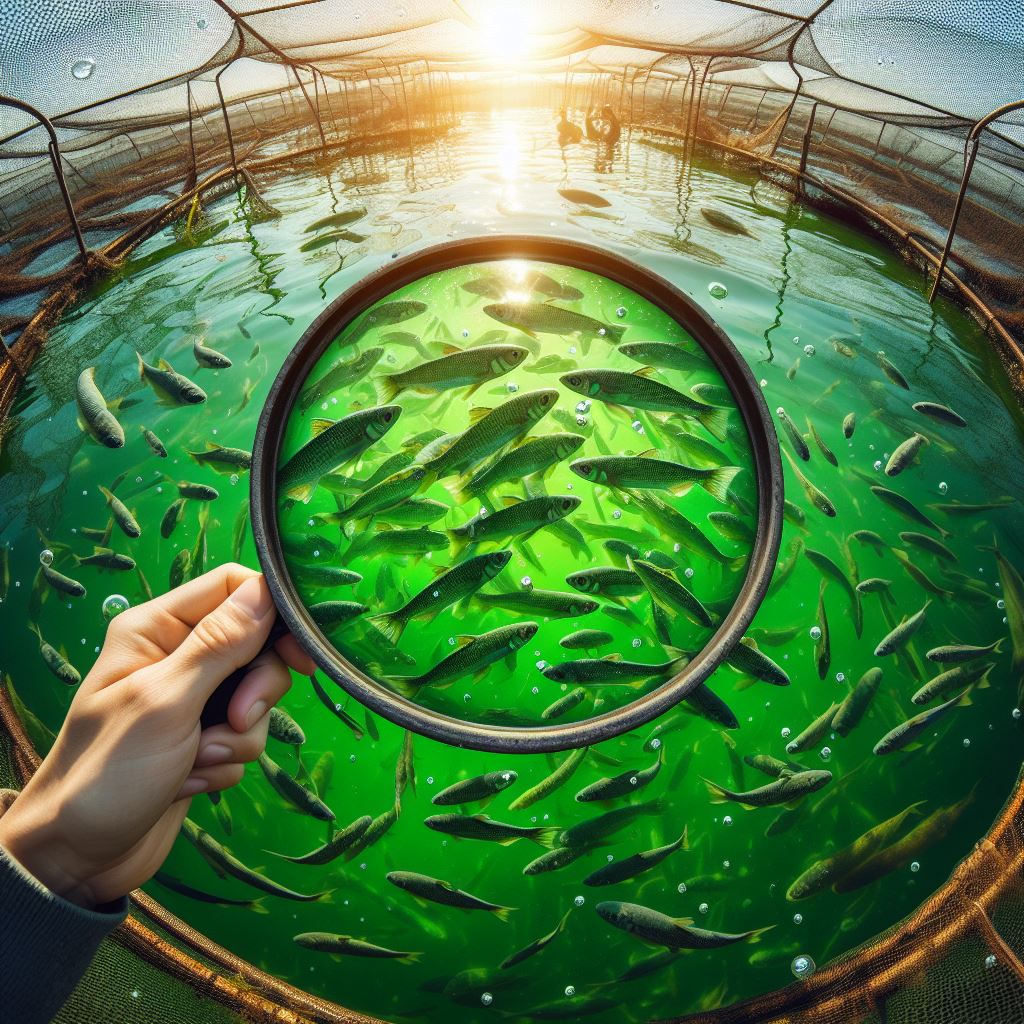
Biofloc Fish Farming In Nepal
Introduction
Biofloc fish farming is gaining popularity in Nepal as an effective and long-lasting technique for growing fish. This innovative technique involves creating an environment where microorganisms, such as bacteria and algae, form a bio floc to enhance water quality and provide a nutrient-rich environment for fish. In Nepal, where traditional aquaculture faces water scarcity and environmental concerns, bio floc fish farming offers a promising solution.
Biofloc fish farming is a kind of aquaculture that uses microbial communities to turn fish waste into a naturally occurring food source, enabling high-density, sustainable fish farming.
With its diverse topography and varying climate, Nepal presents opportunities and challenges for aquaculture. Implementing bio floc technology allows fish farmers to overcome some of these challenges. One of the critical advantages of bio floc fish farming in Nepal is its water-saving feature.
Traditional aquaculture often requires large amounts of water, which can be a limitation in regions with water scarcity. Biofloc systems significantly reduce water consumption, making it a sustainable option for farmers in Nepal.
Moreover, biofloc fish farming contributes to increased biosecurity. The closed and controlled environment minimizes the risk of diseases, providing a healthier and more secure environment for fish growth. This is particularly important in Nepal, where disease outbreaks can devastate aquaculture.
Also, Read: Depths of Sustainable Fish Farming Investigated
Is Biofloc Fish Farming Profitable?
Biofloc fish farming can be very profitable, but it’s not a guaranteed path to riches. Several factors influence its potential for success.
One key factor that makes biofloc fish farming profitable is the efficient use of resources. The technology allows farmers to optimize space, water, and feed, resulting in higher fish production with lower input costs. Additionally, the reduced risk of disease outbreaks enhances the survival rate of fish, further contributing to increased profitability.

The microbial flocs in biofloc systems provide a natural and cost-effective feed source for the fish.
The market demand for fish is another crucial factor. In Nepal, where fish is a staple food and demand is consistently high, biofloc fish farming can be lucrative. The controlled environment of biofloc systems ensures a steady supply of quality fish, meeting consumer preferences and fetching more money on the open market.
However, like any business venture, biofloc fish farming success requires careful planning, proper management, and adherence to best practices. Farmers need to invest in training and education to maximize the benefits of biofloc technology and ensure a profitable outcome.
Biofloc Fish Farming Guide
Implementing a successful biofloc fish farming system demands a thorough comprehension of the technology and its principles. Here is a step-by-step guide to help farmers in Nepal establish and manage a biofloc fish farm:
- Step 1: Selection of Site: Select a place that has access to water and adequate facilities. Think about things like availability, temperature, and water quality.
- Step 2: System Setup: Install a bio-floc system, including tanks or ponds, aeration systems, and a water recirculation system. Ensure proper design and sizing based on the planned fish production.
- Step 3: Microbial Inoculation: Introduce beneficial microorganisms like bacteria and algae to initiate bio floc formation. This microbial community will help maintain water quality and provide a nutrient-rich environment for fish.
- Step 4: Stocking the Fish: Select appropriate fish species based on market demand and local preferences. Stock the fish in the biofloc system at recommended densities.
- Step 5: Water Quality Management: Monitor and manage water parameters such as pH, dissolved oxygen, ammonia, and nitrite levels. Adjust water quality as needed to ensure optimal conditions for fish growth.
- Step 6: Feed Management: Implement a feeding strategy based on the nutritional requirements of the selected fish species. Use high-quality, balanced feed and adjust feeding rates based on fish growth.
- Step 7: Disease Prevention: Adopt biosecurity measures to prevent disease outbreaks. Implement quarantine protocols for new fish introductions and monitor health regularly.
- Step 8: Harvesting: Plan the harvesting process based on the growth rates of the fish. Use proper harvesting techniques to minimize stress and ensure product quality.
- Step 9: Marketing: Develop a marketing strategy to sell the harvested fish. Establish partnerships with local markets, restaurants, or distributors to guarantee a consistent item market.
- Step 10: Continuous Learning: Stay updated on advancements in biofloc technology and aquaculture best practices. Attend training programs and workshops and engage with the aquaculture community for continuous learning and improvement.
Biofloc Fish Farming Cost
While bio-floc fish farming offers numerous benefits, awareness of the setup and maintenance costs of a bio-floc system is crucial for farmers in Nepal considering this innovative method. The cost of biofloc fish farming can differ based on elements like the size of the operation, system design, and local conditions.
General range of estimated costs for Biofloc fish farming in Nepal:
- Small backyard system (around 1000 liters): NPR 20,000 – NPR 50,000
- Medium-scale system (around 5000 liters): NPR 50,000 – NPR 1,00,000
- Large-scale commercial system (around 10,000 liters or more): NPR 1,00,000 – NPR 5,00,000 or more
Here’s a breakdown of critical expenses:
Infrastructure Costs:
Building bio floc ponds involves expenses such as excavation, pond liners, aeration systems, and other infrastructure components. The size and number of ponds will influence the overall infrastructure cost.
Microbial Inoculation:
Introducing beneficial microorganisms to initiate biofloc formation may require the purchase of microbial inoculants or probiotics.

Carbon sources, such as molasses, are often added to stimulate microbial growth in biofloc systems.
These additives contribute to developing a healthy microbial community in the pond.
Stocking Costs:
Acquiring quality fingerlings or juvenile fish for stocking the ponds is a significant upfront expense. The type of fish species chosen and the desired stocking density will impact the overall stocking cost.
Water Quality Management:
Invest in water quality monitoring tools to regularly assess parameters like pH, temperature, and ammonia levels. Quality testing kits and meters are essential for maintaining optimal conditions for fish growth.
Feed Costs:
While bio floc systems reduce reliance on external feed, farmers still need to provide supplementary feed to ensure proper nutrition for the fish. Calculate the cost of commercial feed based on the chosen feeding strategy.
Market Research and Marketing Costs:
Invest in market research to identify potential buyers and establish marketing channels. Budget for promotional activities and building relationships with local markets or distributors.
Labor Costs:
Consider the labor required for daily operations, including feeding, monitoring water quality, and general maintenance. Labor costs will depend on the farm scale and the level of automation implemented.
Farmers must conduct a thorough cost analysis based on their specific circumstances and local conditions. While the initial investment in bio floc fish farming may be higher than in traditional methods, the potential for increased efficiency, water savings, and higher yields can contribute to long-term profitability.
Here are some additional resources that you may find helpful:
- National Aquaculture Development Centre, Nepal: https://www.fao.org/fishery/countrysector/naso_nepal
- Biofloc Fish Farming Association of Nepal: https://vetnepal.com/article_details/Practices-of-Fish-farming-Biofloc-culture
Conclusion:
In conclusion, biofloc fish farming in Nepal holds excellent promise as a sustainable and profitable aquaculture method. With careful planning, proper management, and ongoing education, farmers can successfully implement and benefit from this innovative technology, contributing to the growth and sustainability of the aquaculture industry in Nepal.
Similarly: Sustainable Practices in Organic Fish Farming: Nurturing Healthier Aquatic Ecosystems
